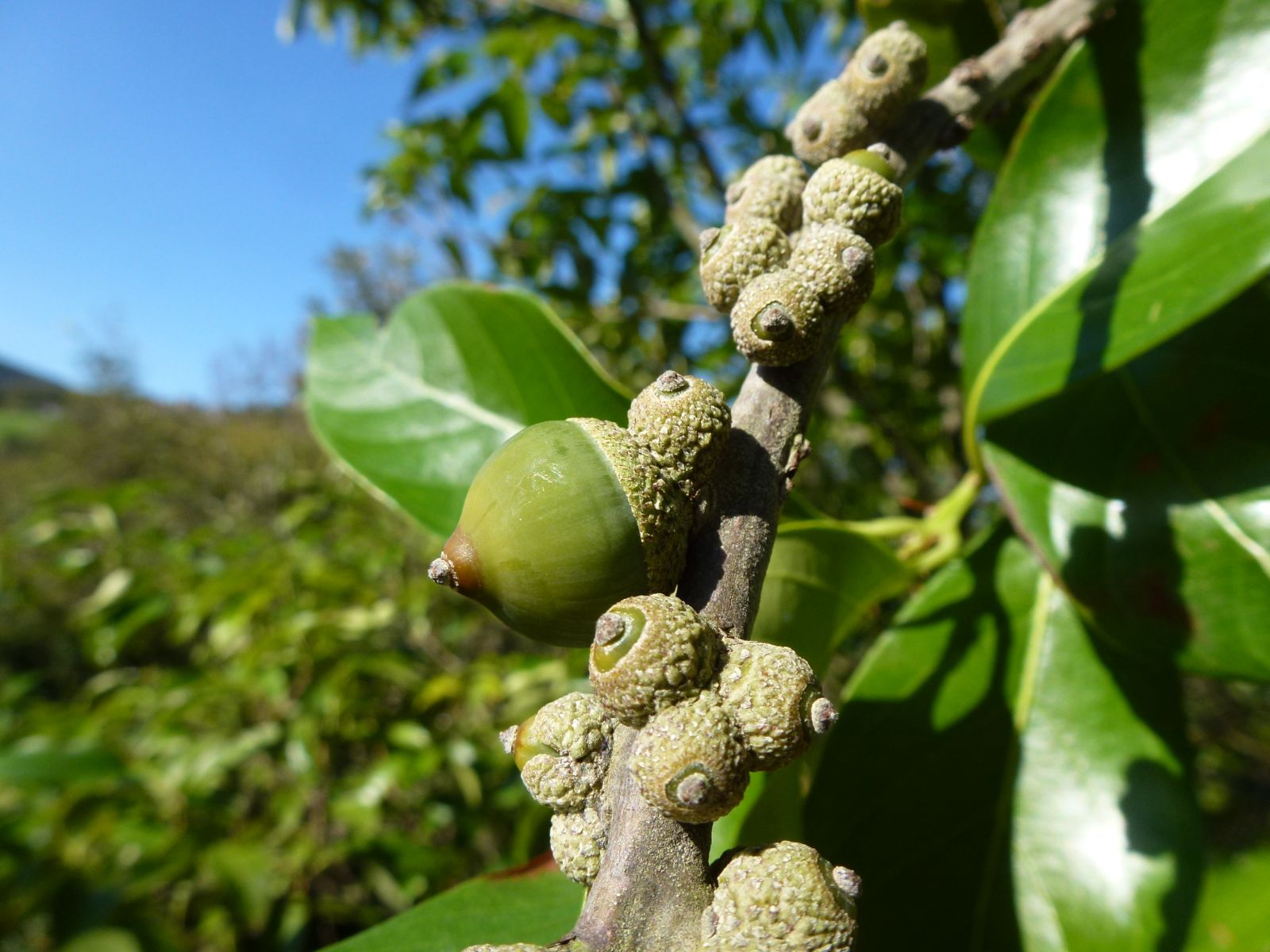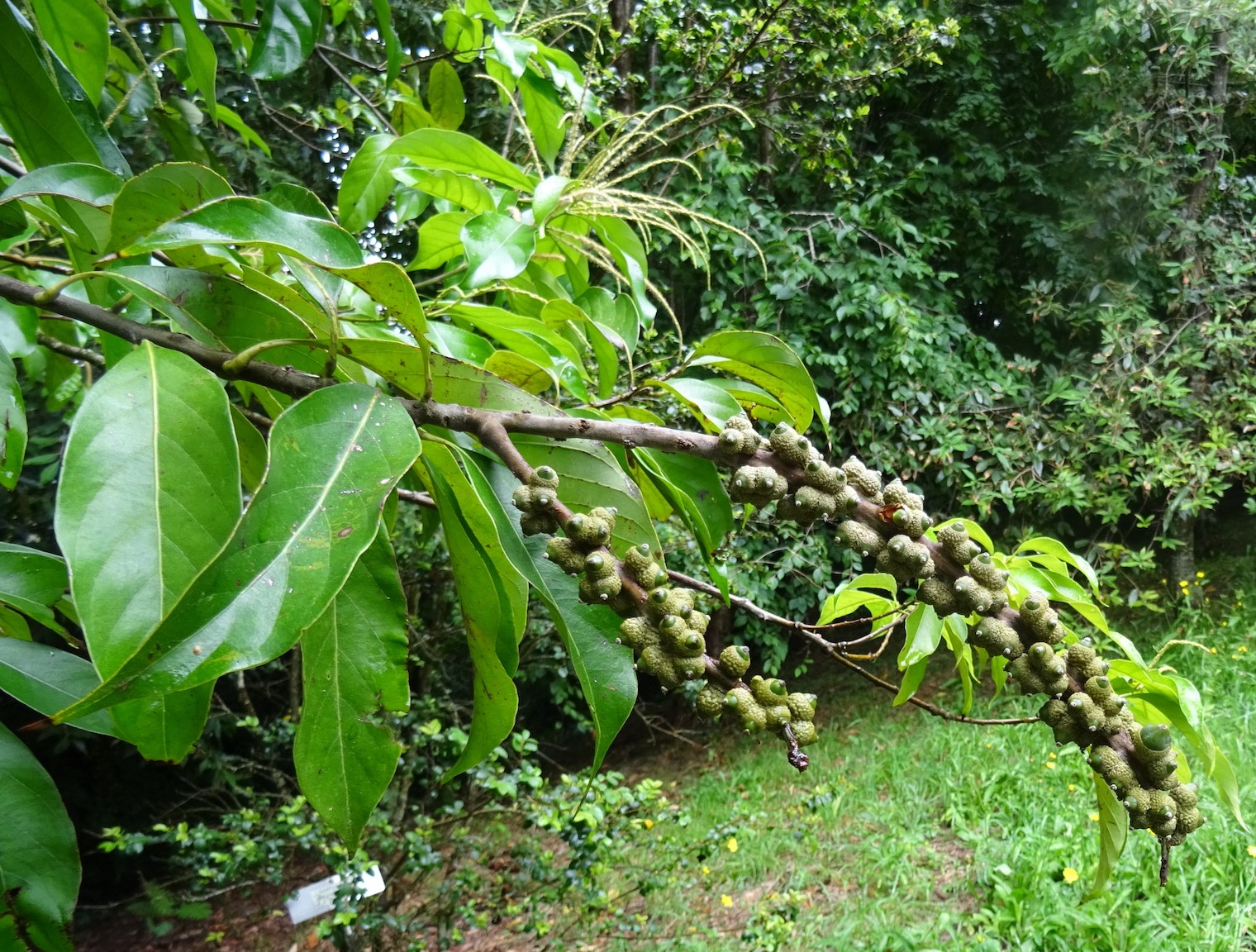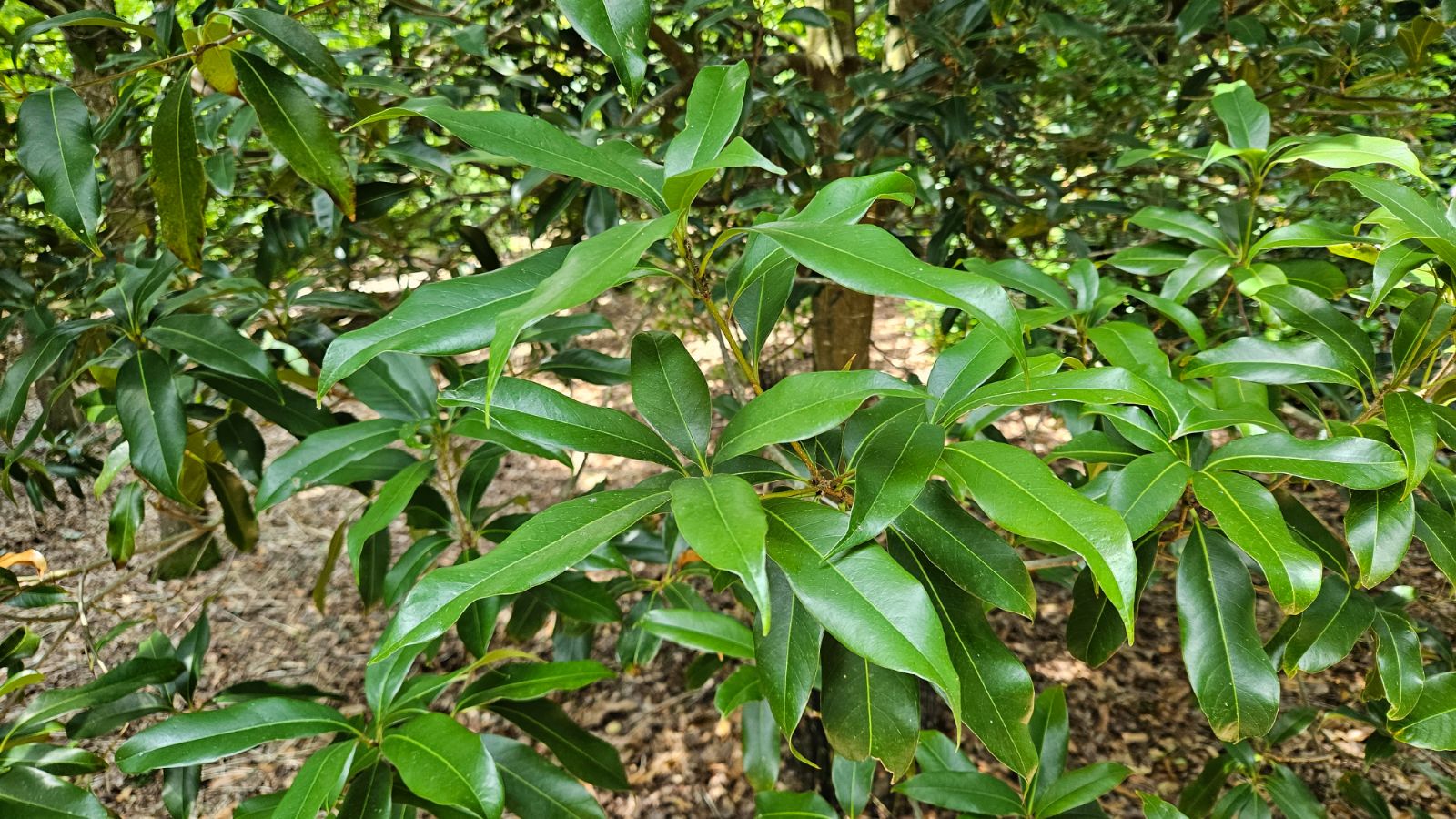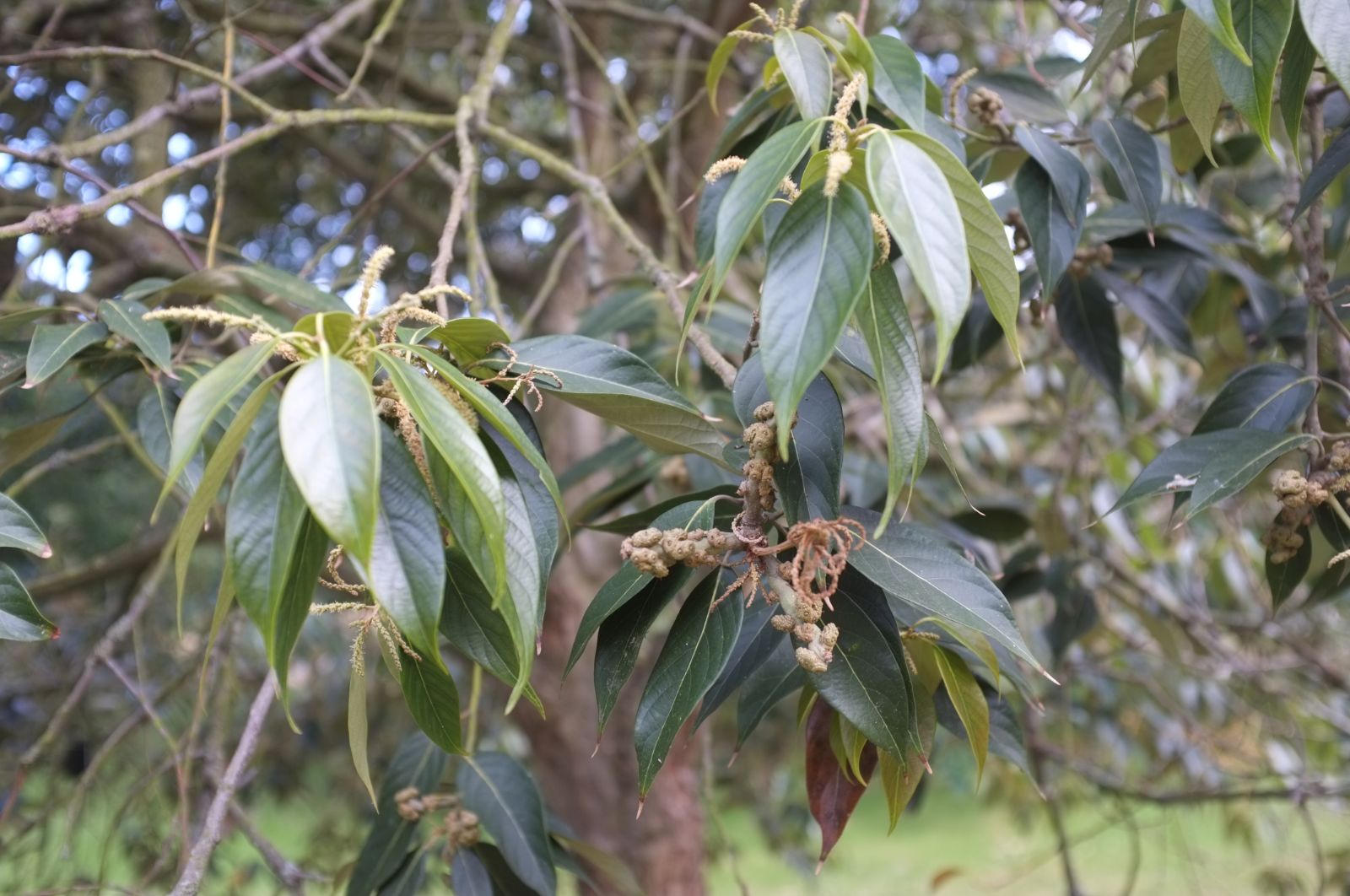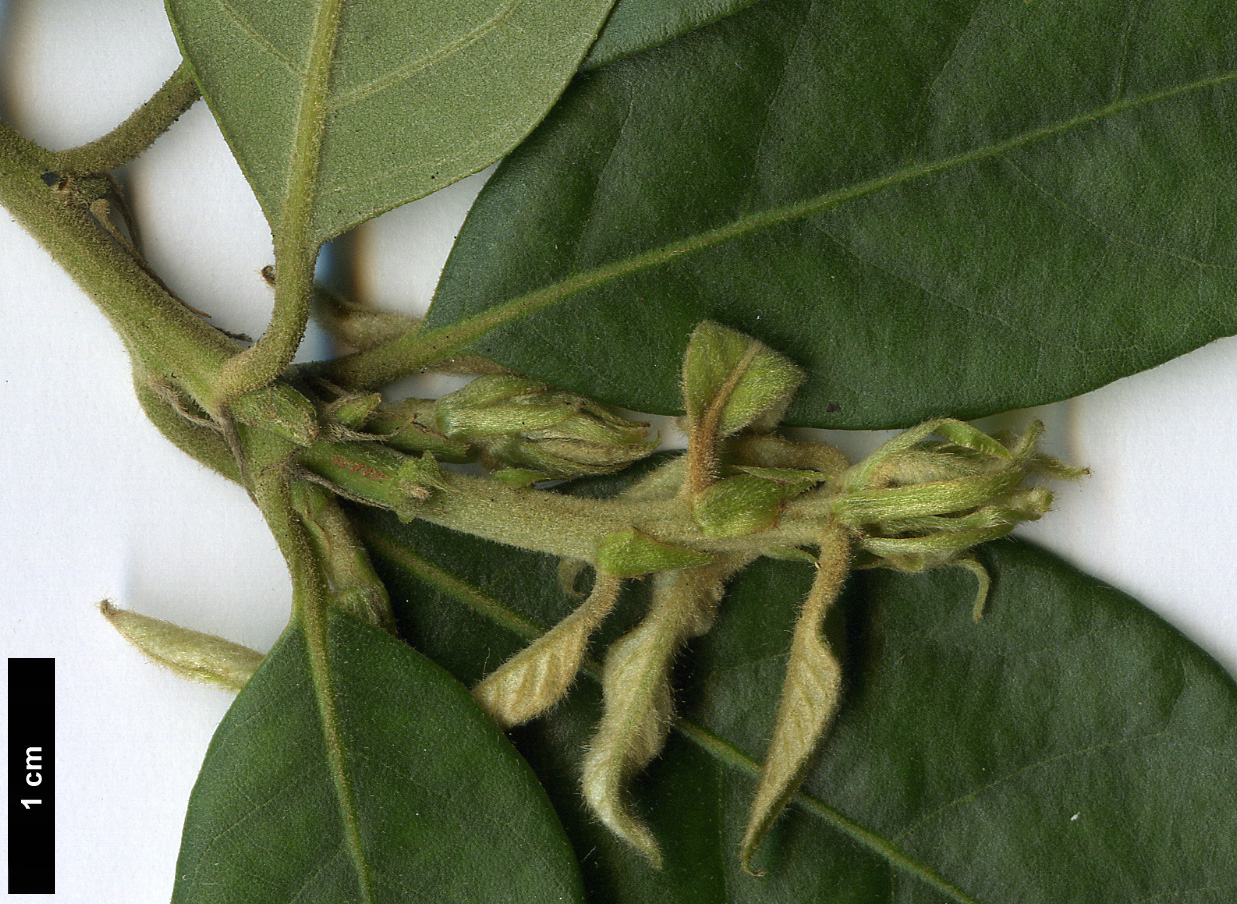Lithocarpus dealbatus
Credits
Article from New Trees by John Grimshaw & Ross Bayton
Recommended citation
'Lithocarpus dealbatus' from the website Trees and Shrubs Online (treesandshrubsonline.
Genus
Tree to 20 m. Bud scales, branchlets, petioles, inflorescence rachises and cupule scales all covered in short, tawny hairs. Leaves papery or leathery, 7–14 × 2–5 cm, ovate to elliptic or lanceolate, upper surface green, glabrous, lower surface same colour as above or greyish and with waxy scales, (8–)10–13 secondary veins on each side of the midrib, tertiary veins conspicuous on lower surface, margins entire or with a few apical notches, apex long-acuminate to acute; petiole 1–2 cm long. Monoecious. Staminate inflorescences to 15 cm long, clustered at branch apices. Pistillate inflorescences to 20 cm long. Rarely androgynous. Cupules in clusters of three (to five); cupule 0.8–1.4 cm diameter, covered with triangular, imbricate bracts; enclosing half of the nut. Nut globose with a depressed apex. Flowering August to October, fruiting August to October of the following year (China). Huang et al. 1999. Distribution BHUTAN; CHINA: Guizhou, southwest Sichuan, southeast Xizang, Yunnan; INDIA: northeast; LAOS; MYANMAR; THAILAND; VIETNAM. Habitat Mixed mesophytic forest with Pinus yunnanensis and other Fagaceae, between 1000 and 3100 m asl. USDA Hardiness Zone 8. Conservation status Not evaluated. Illustration Huang et al. 1999; NT462, NT464. Taxonomic note Lithocarpus dealbatus subsp. leucostachyus (A. Camus) A. Camus is now treated as a synonym of L. variolosus (Huang et al. 1999).
The principal source for Lithocarpus dealbatus in cultivation seems to be Charles Howick & Bill McNamara’s collections in Sichuan in 1990. At Quarryhill there is a tree from H&M 1376, standing 2.5 m tall in 2004. It seems not to appreciate the Californian heat and high light intensity, producing much smaller, paler leaves than its parents in the wild (W. McNamara, pers. comm. 2004), but it has flowered and fruited nonetheless. It did not do well in Vancouver as it kept growing through the autumn, and new growth was invariably damaged (P. Wharton, pers. comm. 2007). In southern England, however, it is proving to be a success in cultivation and it looks as if it will be a valuable new addition to the garden landscape. At the Hillier Gardens a vigorous young tree from H&M 1483, planted in 1995, was 4 m tall and developing inflorescences when seen in October 2006; the preceding hot summer seemed to have stimulated several species there to flower, albeit very late in the year. By April 2008 it was 5.2 m (6 cm dbh) (A. Coombes, pers. comm. 2008). Flowering can be precocious, however, as a tree grown from a collection made by John Rippin in Yunnan in 1999 (as L. confinis) also first flowered there in (September) 2006, when it was less than 2 m tall. The specimens at Kew are again from H&M 1483, collected at the upper limit of the species’ existence at 3080 m on Mount Luoji, where it grows over limestone. The pendulous dark green leaves with paler undersides are attractive.

